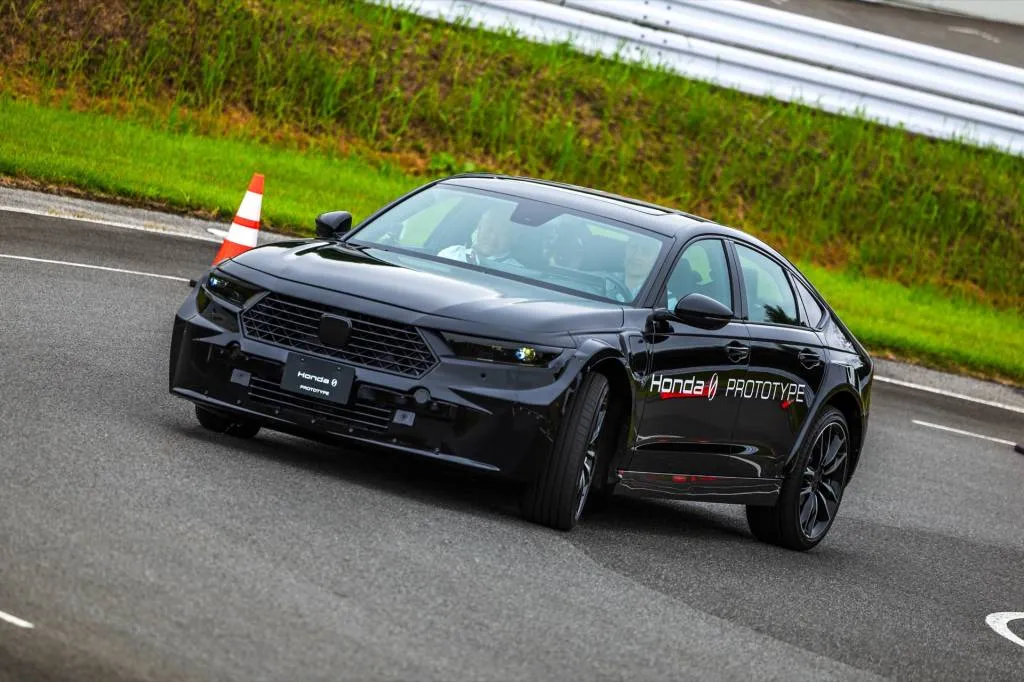- Honda’s own mass-market EVs are taking form, previewed in an Accord
- Series 0 EVs will be built in Ohio starting late 2025
- Series 0 has been designed from the start for lighter weight and lower rooflines
The Honda Accord sedan I’m piloting around a small course at the automaker’s Tochigi, Japan, R&D facility accelerates quicker and corners flatter than any Accord I’ve ever been in. It’s also the quietest.
While this may be Honda’s midsize mainstay in appearance, it is something very different from the ground up. It’s one of just a few prototypes acting as a development proof point for the 0 Series platform, Honda’s dedicated EV platform—with no GM input—set to underpin seven different 0 Series EVs by 2030 globally. An Acura and Honda based on the platform are both due for U.S. deliveries within the next couple years.
Honda has confirmed that a yet-unnamed production model based on the Saloon concept, which itself is sized in the vicinity of the Accord, will arrive in 2026. It’s also confirmed that an Acura EV based on the Performance EV Concept shown at Monterey Car Week in August is headed to production in late 2025 and may technically be the first of the new series produced.
Honda Saloon EV concept
While that Acura concept follows a rakish “crossover coupe” look that impresses as an evolution of what that luxury brand has shown before, the Honda Saloon concept itself is seen as the poster car of the 0 Series. It’s also the talisman of a new Honda, refocused for the age of EVs.
Inside, the interface of this harbinger in hiding is mostly standard Accord. With the exception of a thin instrument screen fitted above the steering wheel, there’s no sign of the exotic Saloon concept car’s yoke-like steering wheel or vast screen space.
Just seconds before, a short distance into the initial straight of a short road course, I’d noted that the accelerator is tuned linearly. A deeper prod taps into propulsion Honda might previously have reserved for the NSX hybrid sports car. As I roll back on with my right foot at the same straight a second time, I’m pinned back with Gs that felt right on par with the quickest mainstream AWD EVs—all except those with the likes of Plaid, Performance, or N badging.
After getting a sense of the flat cornering around the back, my development-engineer passenger gives me the nod to peg it a little longer, and before I get to a quiet “four-one-thousand” count, I hit somewhere around 75 mph, before braking quickly for the tight left-hander at the end of it.
The sounds and sensations coming from underneath don’t feel like those from a cobbled-together prototype. I hear no appreciable motor or gear whine, and torque delivery from the motors (each at 241 hp, mounted front and rear here) is vibration-free. Body control feels in sync with the instantaneous torque delivery from the electric motors, and even as I aim to provoke the body out of line, the motor controls, stability system, and suspension all feel like they’re working together as a unified piece.
0 Series adds up to more than a 480-hp Accord EV
That’s right; the suspension is a key aspect here. To put it bluntly, this is a near-500-hp electric Accord with an air suspension—and some extra weight, which I’ll get to later. But the way everything plays together, you wouldn’t know it.
The 0 Series uses air-spring struts in front, with a multi-link setup for the rear, with those springs on a separate force path than the air suspension. The e-axle units, air suspension, and a stability system incorporating 3D gyro sensors from the company’s ASIMO robot family—a world first—are all connected so as to react together.
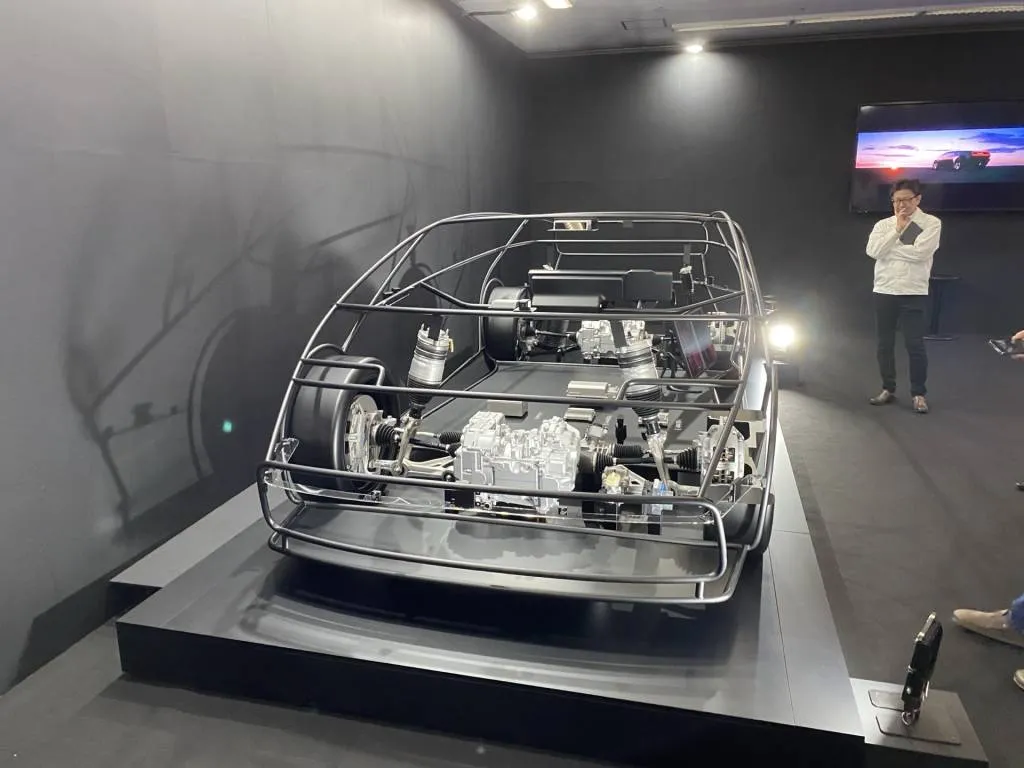
Honda 0 Series platform
It comes down to simpler physics as well, and keeping weight low and near the center of the vehicle as much as possible. For example, newly developed compact e-axles have an inverter that’s about 40% smaller than those currently offered by OEM suppliers, helping achieve a lower profile. The profile of the battery pack—the product of 6,000-ton “megacasting” machines that will be installed in Ohio—has been reduced by the smaller pouch cells to be supplied by partner LG.
By reconceiving the body structure around the priorities of offset collision forces and occupant protection, and taking advantage of the higher-strength steels and lack of an engine under the hood, Honda has been able to omit the crossbeams at the top of the cowl.
This frees up Honda to bring the hoodline lower, making something close to that very low, aerodynamic profile of the 0 Series Saloon concept a production reality.
The super-low battery pack, slimmed-down e-axles, and lower-profile body structure all help 0 Series EVs—likely the production version of the Saloon—to be less than 55 inches tall overall.
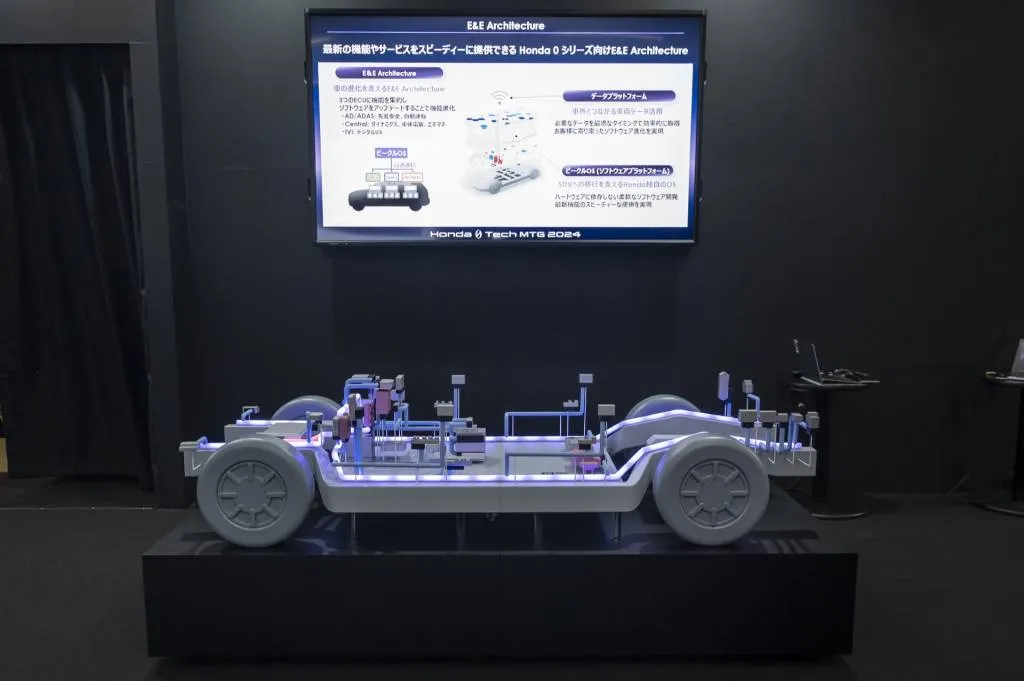
Honda 0 Series EV platform
Questions like weight await the 0 Series
My takeaway, based on the way this special Accord delivers its power, corners, and maintains its pose, is that it feels both lower and more confident and “glued to the road” than an Accord. My development engineer passenger informs me that my seating point is actually a slight bit higher than that of the Accord, and vaguely confirms the obvious—that it is indeed heavier than an Accord.
Despite my best efforts to reframe and rephrase questions in various ways to get a ballpark answer, Honda wouldn’t yet reveal some basic weight-related questions: what are the battery sizes of the first 0 Series products (two pack sizes are initially planned); what size pack is installed in this prototype; or about how much heavier it is versus an Accord.
Given that, it’s a stretch to jump to any other true takeaways quite yet, especially when not everything on this Accord prototype is from the Series 0 platform. Those upcoming EVs will have a completely new steer-by-wire system, including all the redundancy needed for future higher levels of driver-assistance systems. They’ll also get a reengineered regenerative braking system, which Honda said wasn’t production-representative in this prototype.
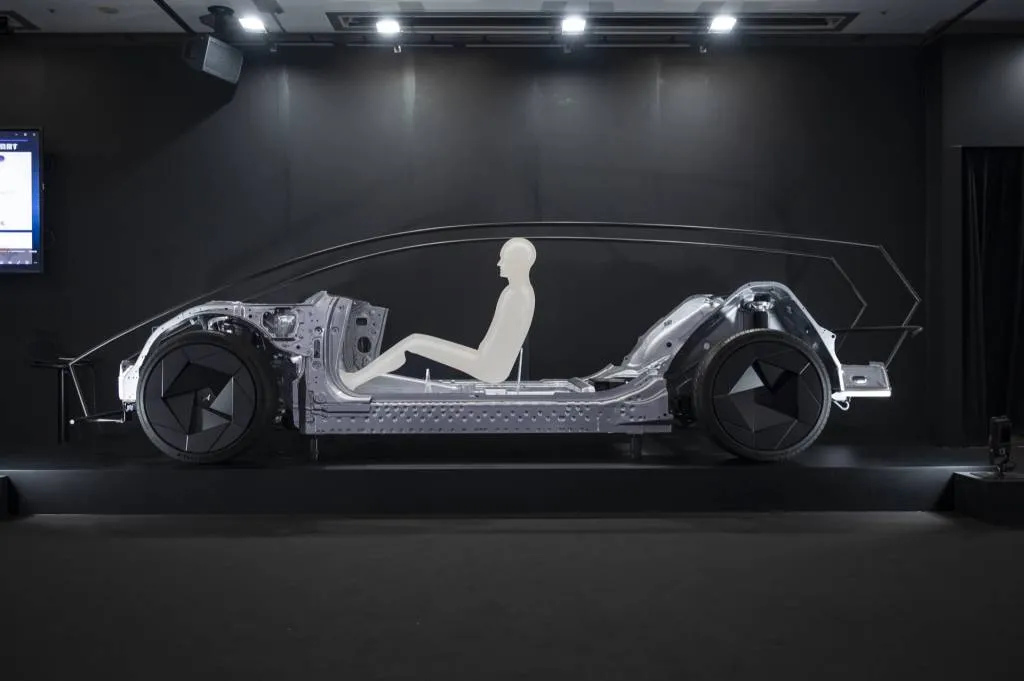
Honda 0 Series EV platform
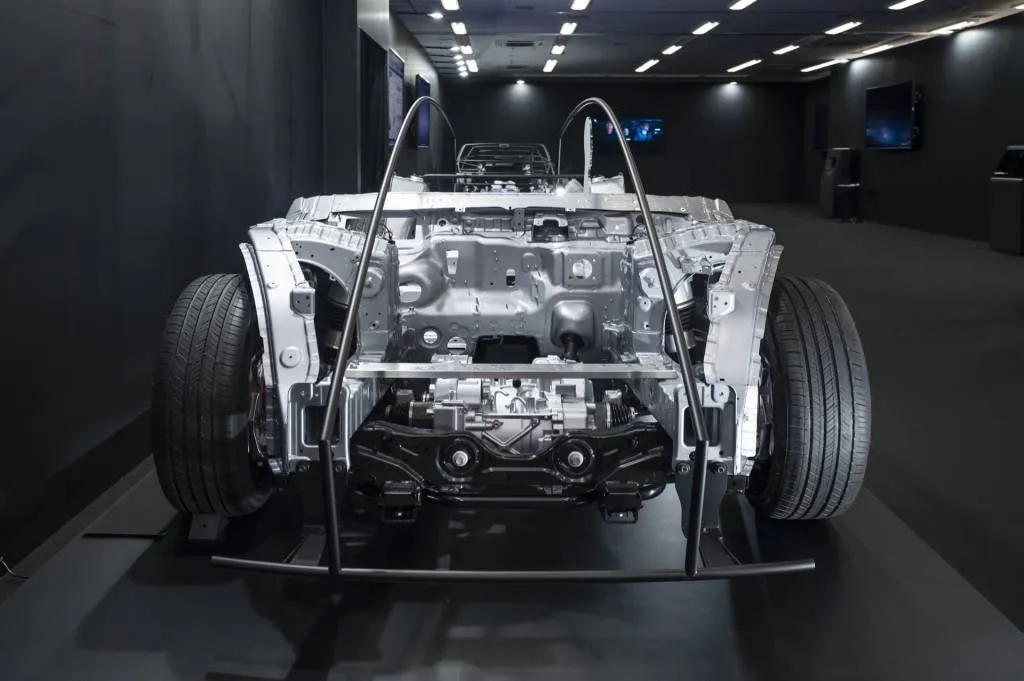
Honda 0 Series EV platform
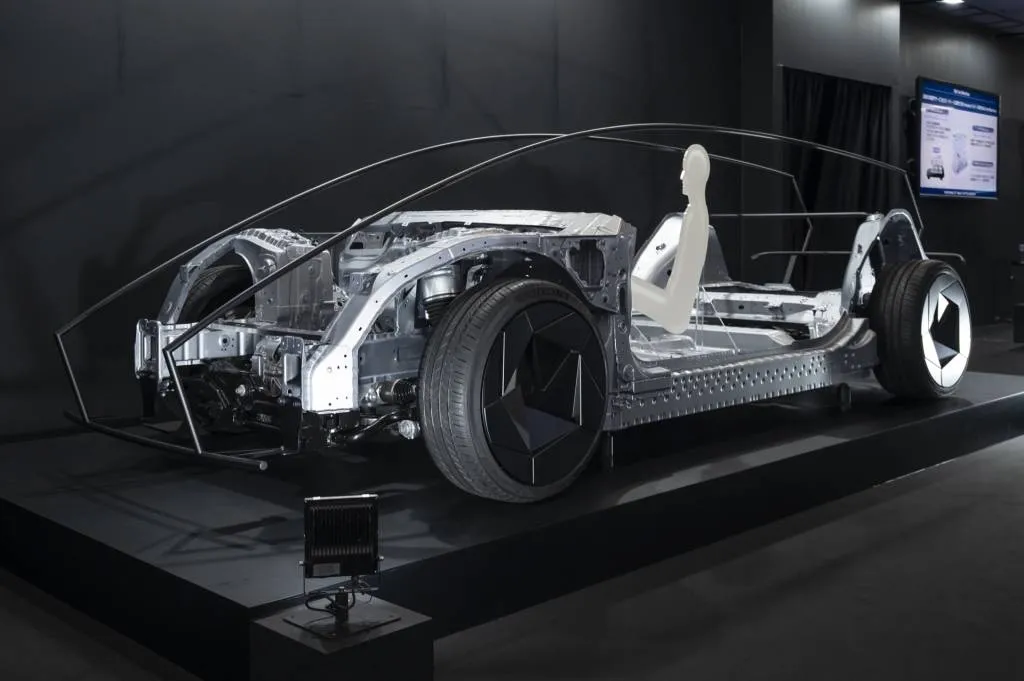
Honda 0 Series EV platform
0 Series summons AI, bidirectional charging
Among the features Honda aims to include in the 0 Series models are a Summon feature, as well as one that will, with extended reality (XR) tech—and loads of available bandwidth, should you be lucky—allow friends or family to virtually ride along. It also promises regular over-the-air software updates, and is considering plans to offer purchases and features over-the-air.
The automaker plans to incorporate learning capability for its assisted-driving system from U.S.-based Helm.AI, and it says that it “will strive to be the first company in the world to expand the application of eyes-off functions to all driving situations.” Honda will also feature a voice assistant personalized to each user.
Honda didn’t specifically tout the 0 Series’ bidirectional charging capabilities, but it’s planning a smart home charging system to go with these products, enabling future V2H and V2G capabilities—so infer what you will about the rollout of such tech.
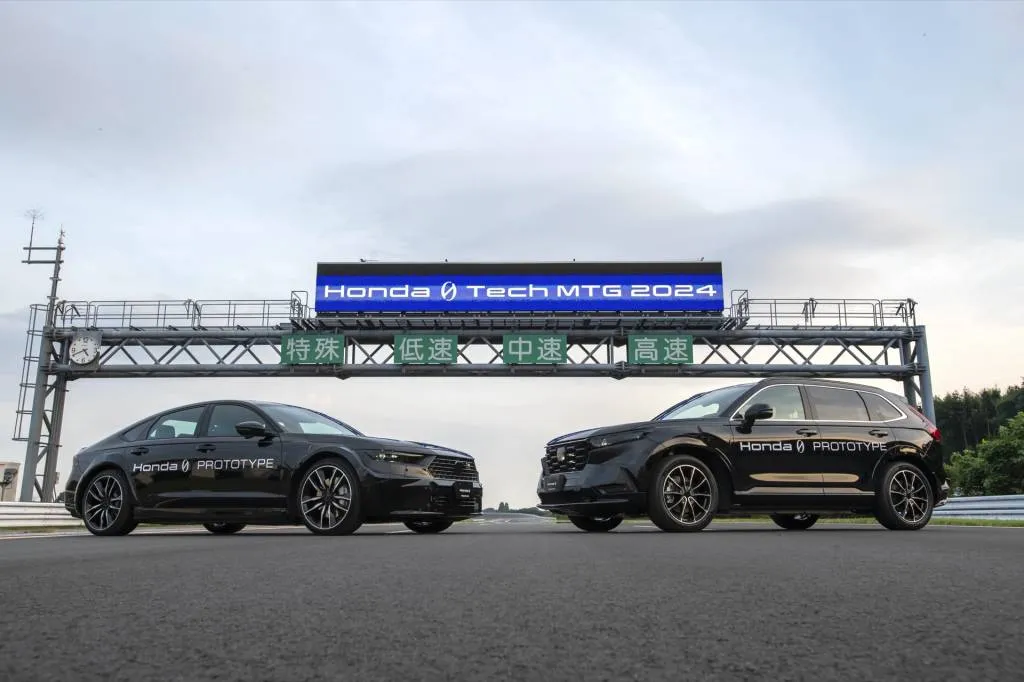
Honda Series 0 prototype (Accord)
0 Series EVs will start in America
Although I traveled to Japan to get this early look at the 0 Series platform, Honda’s Ohio EV hub will be at the core of its production—and so will production flexibility of these models with gasoline vehicles, all on the same line.
Honda has a battery joint venture with LG there, eventually potentially reaching 40 gigawatt-hours annually. That’s enough for hundreds of thousands of long-range EVs annually. Sony’s Afeela brand EVs will share the platform but not all of the same components, Honda says.
Initial 0 Series models won’t be cheap, and affordable Honda EVs are farther off, Honda says. But based on this first taste of what’s in store in these upcoming models—especially a sleek flagship—they may prove to be the full reset Honda needs, just in time.
—
Motor Authority accepted travel expenses, accommodations, and meals from Honda in order to facilitate this report.



